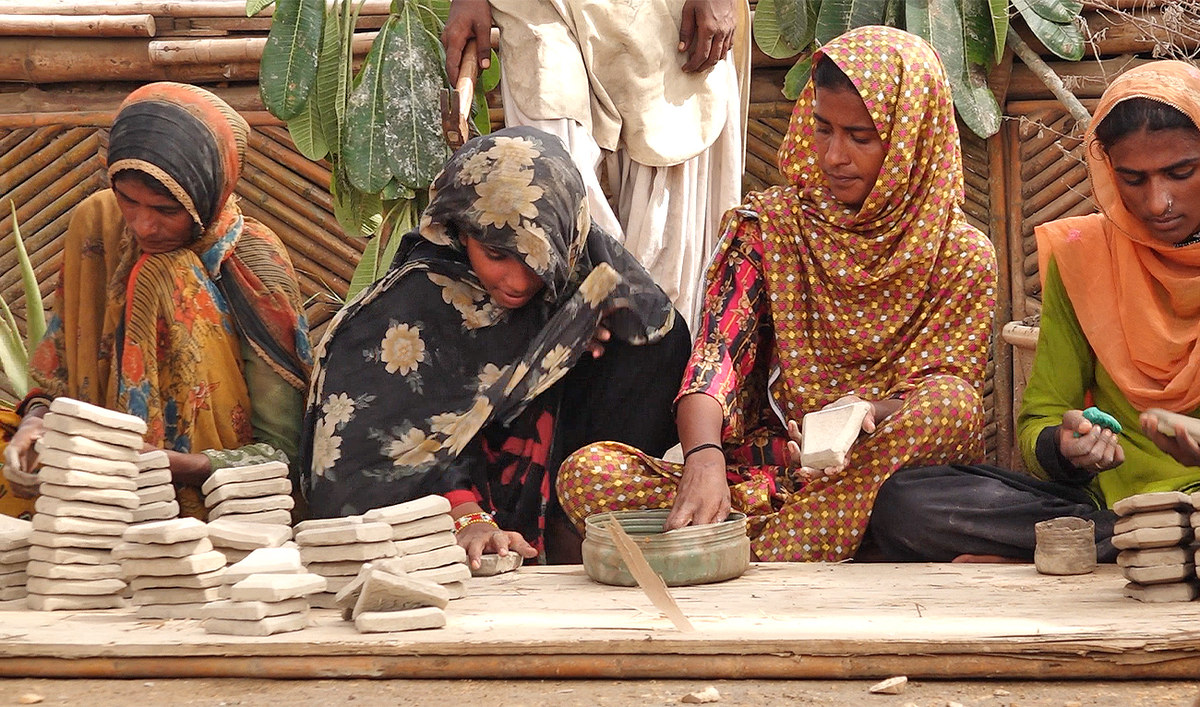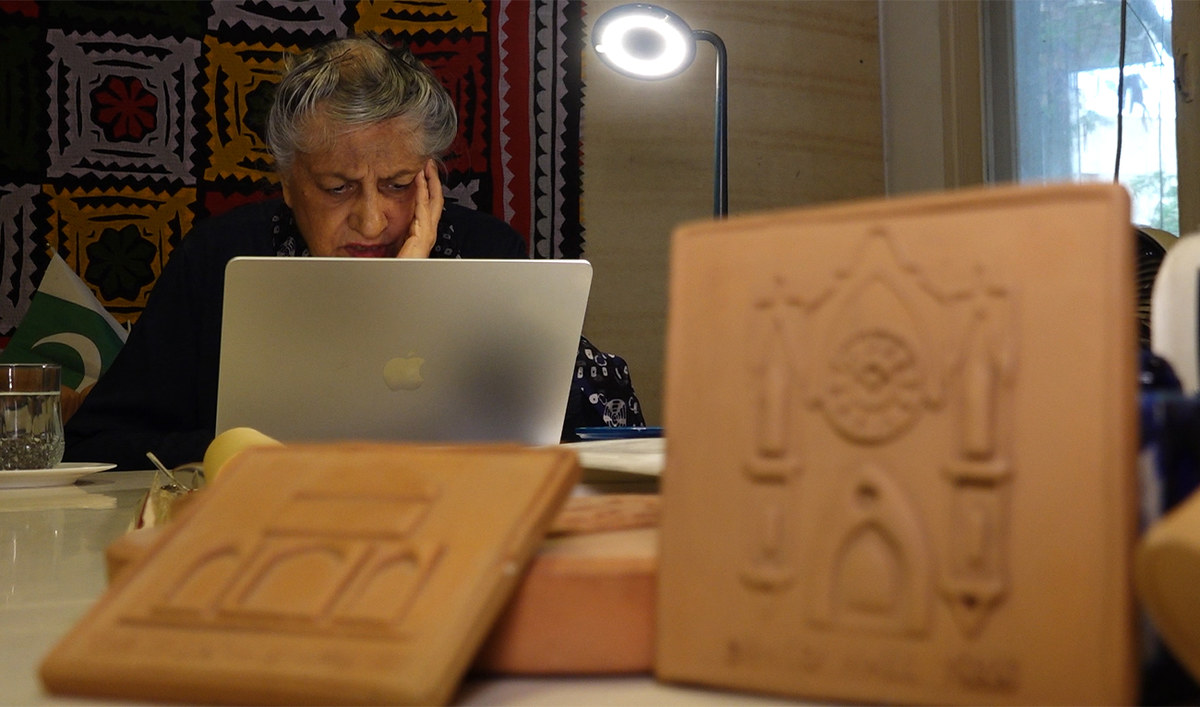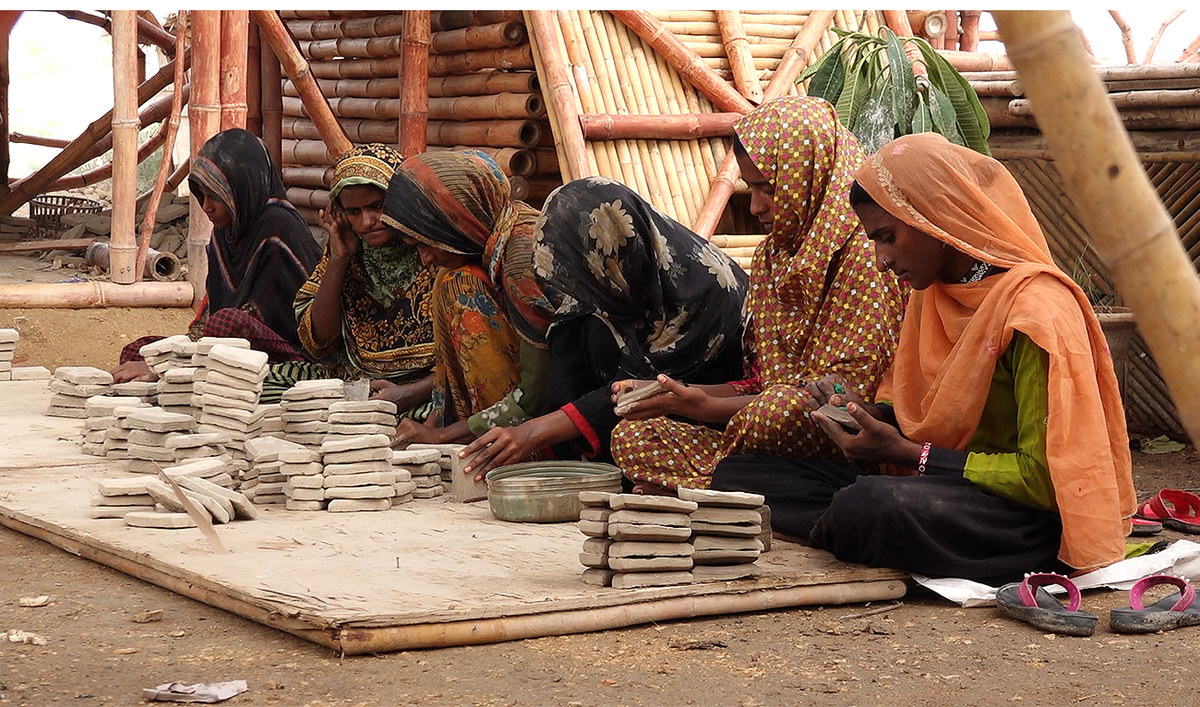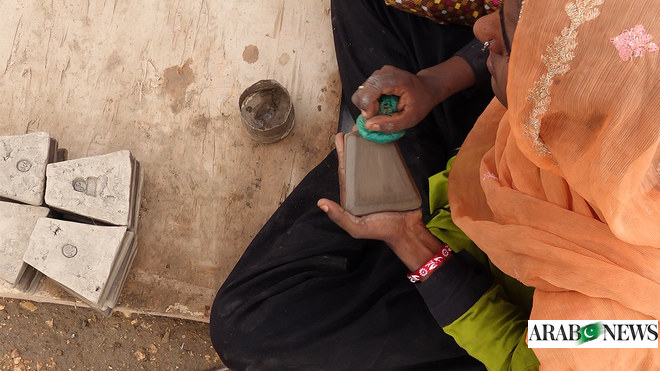MAKURI, THATTA: Under the harsh sunlight surrounding her, Hoor Noor worked by hand in the shade of a bamboo structure at the vast Makri Cemetery, one of the largest in the world, shaping clay tiles.
Until a few years ago, Noor was one of dozens of women begging in a cemetery near the city of Thatta in Pakistan’s southern Sindh province. In 2018, prominent Pakistani architect Yasmin Lari decided to help these women live a life of dignity, and launched a programme to teach them how to make Khasi tiles, one of Sindh’s oldest handicrafts.
“Life was not worth it before,” Noor, 55, a resident of Shikari village, near where the training facility is set up, told Arab News as she removed a tile from a wooden mould. “Now my children have enough to eat and drink. Our life is good now.”

Makri is home to more than 500,000 tombs and cemeteries scattered across an area of about 10 square kilometres. Among those buried there are kings, queens, governors, saints, scholars and philosophers, many of whom rest in brick and stone monuments richly decorated with glazed tiles.
Now Noor sells the tiles she makes with her own hands at the same shrine where she once begged for alms.
“She started selling khash tiles and suddenly started making money,” Lari told Arab News. “Once she started making money, everything changed.”

Noor’s story has inspired other women, and since it began, around 230 beggars, most of them women, have joined Lari’s training programme.
Tiles made through the program have been used in several historic buildings in Karachi, including the Denso Hall Library and the historic Qalandars Chowk. In their latest project, the women are making tiles for a historic street near the Pakistan National Oil Company in Karachi’s upscale Clifton neighborhood. Lari’s ultimate goal is to teach the traditional Khasi tile-making skills to up to 15,000 Sindhi village women.
In fact, as more roads and historical buildings are restored in Karachi, more women will find honest work in Makri, Lali said.
“More people will use it. [kashi tiles] “More women will be able to take up training in urban areas,” the architect said.

Those who have mastered this technology have already seen a dramatic improvement in their lives, with some even earning as much as Rs 20,000. [$71.98] “To the moon,” Lari said.
“When you have money left over after paying your household bills, [also] “Get me a little goat,” said Hoor, holding the clay between his hands.
Samia Qadir, another artisan and mother of five, said she was happy that her children could now go to school.
“My daughter goes to school,” Qadir told Arab News. “If I had the opportunity, I would have gone too, but I am happy working and making tiles, and my children are happy.”

